It’s not always obvious why you need to do some upkeep on your PWC and the time-frames too.
To keep your machine running for many years, there are a few things you must do. These items keep all the systems in tip-top shape and make the whole watercraft enjoyable. The last thing you want is to go out for a ride and find the machine not wanting to start, or even worse, shutting off during a ride.
Compared to cars, personal watercraft are simpler, but there are a few things you need to do at certain times. You don’t need to be an expert for most of the things, just not afraid to put in the work.
You Need To Do This Before Hopping On!
To start us off, here is everything you should be doing before every ride:
- Lift the seats off for a few minutes to vent any fuel vapors before starting the engine. You should also lift the seats off to vent after refueling!!!
- Having the seats removed, check the hull for excess water. A few cups are okay, but it’s a problem if the water reaches the engine.
- Check for any damages to the hull.
- Check oil and coolant levels.
- Check drain plugs and o-rings for any damage. Make sure the drain plugs are in before putting PWC in the water.
- Start and run the PWC for 10 seconds out of the water to make sure it will start before putting it in the water.
- Check trailer lights to make sure they work.
- Check for fire extinguisher, safety kit, and whistle are in the machine.
After Ride Care
- If you rode in salt water or dirty water (swamp), flush the jet ski engine on the garden hose.
- After each ride, rinse the engine compartment using clean hose water, especially after saltwater rides. Use the sprayer’s mist setting, ensure the drain plugs are out, and keep the engine off during rinsing.
- After every ride, wash and clean your jet ski before storing it, especially if you were in saltwater. Car soap works fine; you don’t need boat soap.
- Allow the PWC to fully dry before you put on the cover.
The First 5 Hours ONLY
The first 5 hours on a brand-new PWC, especially if it’s supercharged, are crucial.
During this period, avoid prolonged constant speeds; vary RPMs every few minutes, and please don’t hesitate to use the fast key and do some playful riding!
The Forced Break-In Mode
Some models do have a forced break-in period where you get increased RPMs over time.
So if your brand-new PWC doesn’t seem fast, it’s probably likely in a forced break-in mode that is designed to protect the engine.
The initial Service Is Important!
Your first service is anywhere from 10 to 50 hours, depending on your manufacturer.
I like doing the first service around 10 to 25 hours, as I find 50 hours too long to wait!
Monthly Routines
- Spray anti-corrosion (silicone spray lube) (Amazon Link Ad) on anything “shiny” or “electrical” in the engine compartment. This is for sure a must if you ride in salt water.
- Spray silicone anti-corrosion on metal and moving parts near the jet pump and reverse bucket. Let the jet ski air out afterward; it’s flammable. Always use silicone spray lube to avoid harming rubber and plastic.
- Spray the seats using vinyl protectant (Amazon Link Ad)!
- Spray the fiberglass of your watercraft using a spray wax to protect it from the sun. The boat spray wax works better, but car spray wax will work too.
Yearly or 50 Hour Increments, Whichever occurs Sooner
- Change the oil and oil filter.
- Change the spark plugs.
- Inspect engine mounts for any damage or cracks.
- Inspect coolant tank level, leaks, or damage if you have a Sea-Doo.
- Inspect air intake and hoses for any damages.
- Check battery and terminals for damage or corrosion. Replace the battery every 3 to 5 years.
- Check drain plugs and their o-rings for any damage.
- Inspect the impeller and wear ring for damage. Deep grooves or missing pieces are concerning. If the jet ski feels like it’s not catching when you accelerate, the wear ring might be bad.
- Check driveshaft and carbon ring (Sea-Doo) for any damage.
- Inspect reverse bucket for any damage.
- Inspect fuses.
- Check the sacrificial anode.
Sea-Doo Supercharger
Please refer to our post on supercharger care here.
Trailer – Don’t Forget About It!
- Grease jet ski trailer bearings. Make sure to use marine grease.
- Inspect tires for damage or dry rot.
- Inspect trailer straps for damage or fading. The slightest tear in a strap means you need to replace them.
The Start Of Winter
The winter-maintenance for a PWC is called winterizing, and we have a post on that here.
Pre-Season Inspection
The pre-season is the de-winterization process that we cover here.
3 to 5 Years
- Replace your PWC battery every 3 to 5 years, even if it seems fine.
- Buy a new cover for your jet ski.
- Buy new straps for your trailer; this includes the front bow strap and rear straps.
- Buy new tires for your trailer.
- Inspect or replace engine coolant if you have a Sea-Doo.
- Inspect or rebuild the pump if needed.
If you’re not getting 3 to 5 years out of your watercraft battery, you need to get a smart battery charger! To get info, check out this post here.
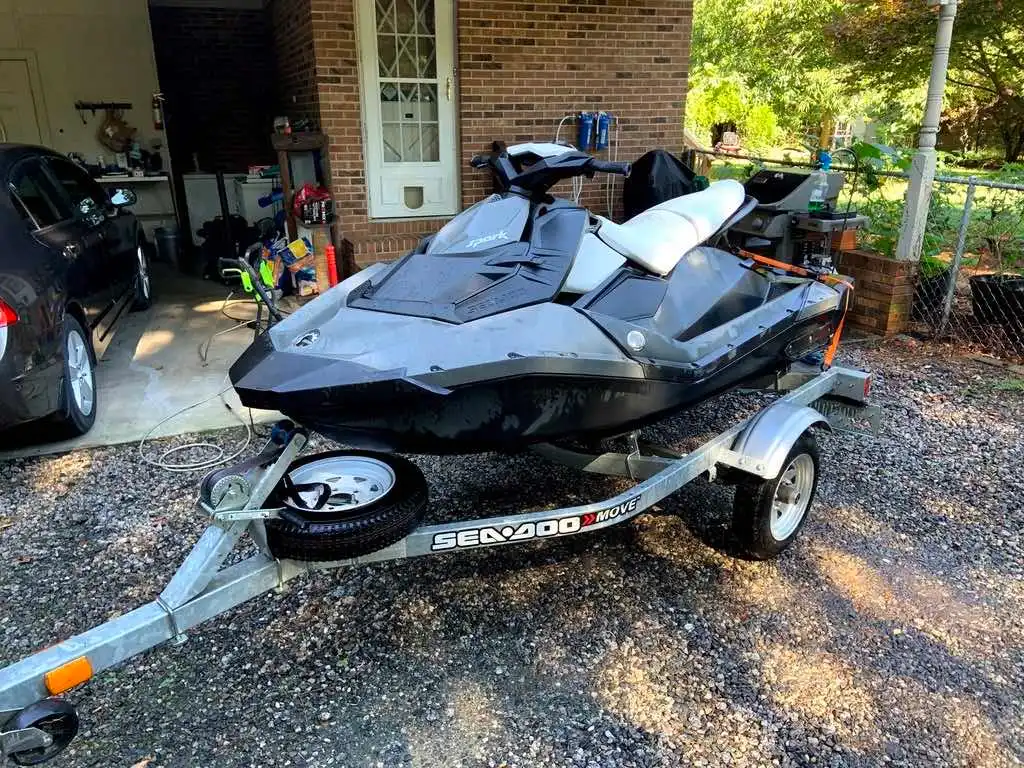
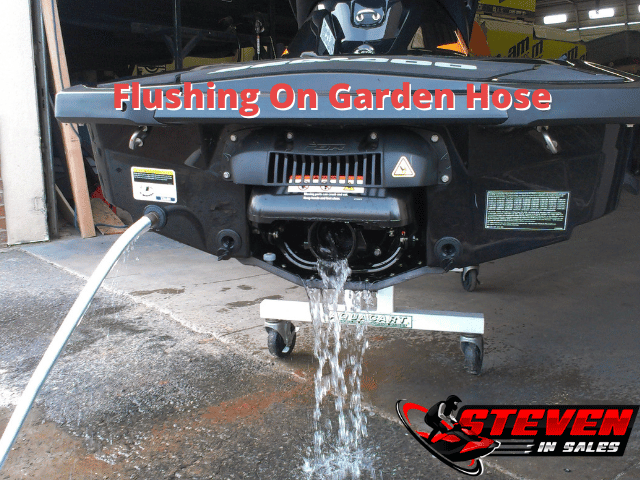

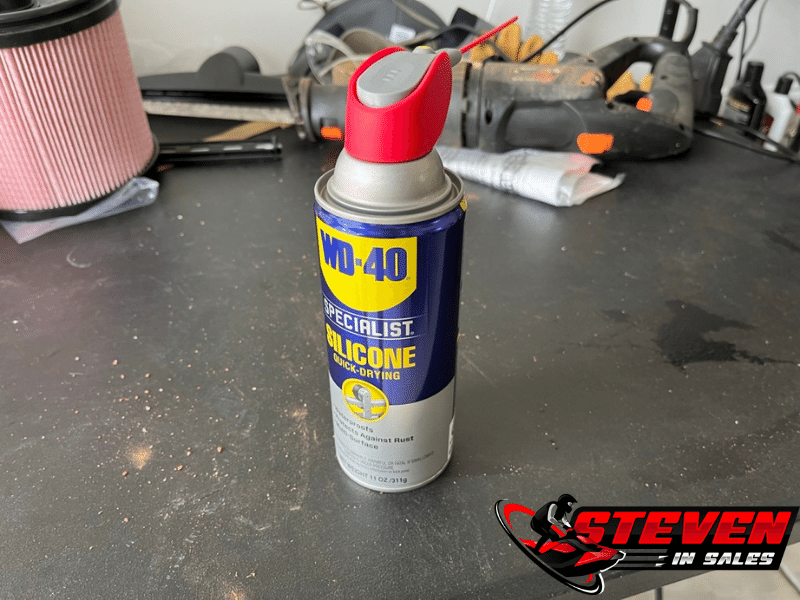
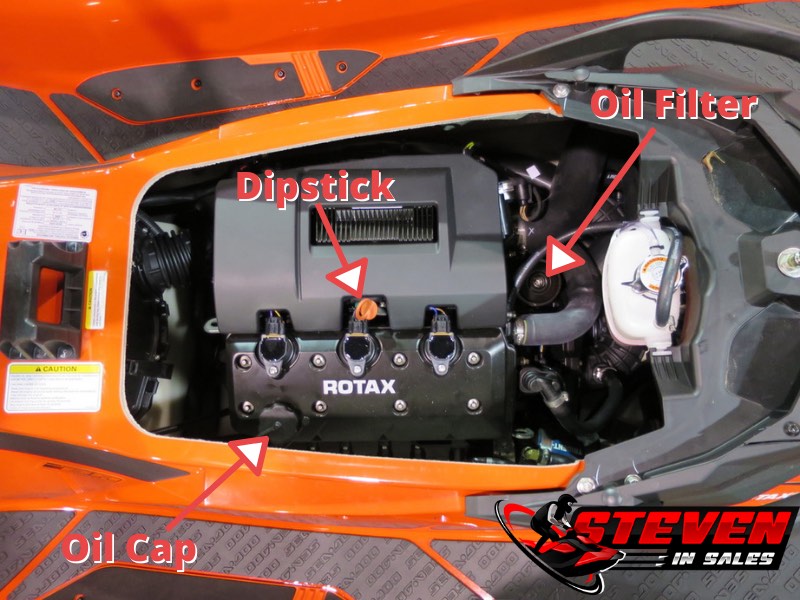
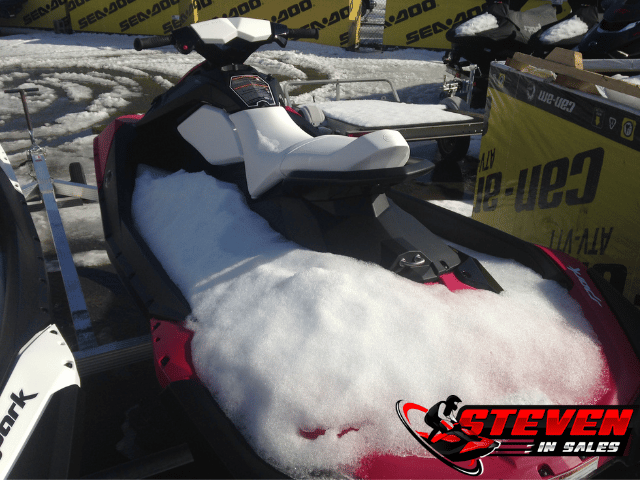
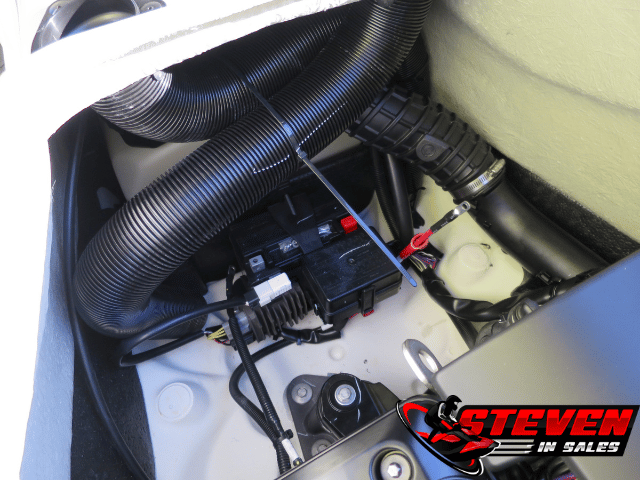
Hi Steven,
Hoping you can review this soon?
Hi Steven,
Thanks for all your articles and YouTube videos. I apologize for all the questions I have but your opinion and expertise is GREATLY appreciated. By the way I flush my Ski and wash it after every ride, and spray Yama lube on jet pump and inside engine every 2 rides. I recently bought a 2021 SeaDoo GTI SE 170. I almost bought a 2021 Yamaha FX Cruiser because I have always heard Yamaha’s are a better design (one shaft from motor to impeller) Anyway, I found the SeaDoo a more comfortable and drier ride. We live in SW FL and I am using the ski once a week all day. My JetSki mechanic has me on the following maintenance and can you tell me if the following seems right in your opinion also:
1. Battery every two years (I put on NOCO low amp charger each night before taking out)
2. Replace oil and spark plugs ever 35 hours ( I have put on 30 hours since buying in November).
3. He said I should replace the JetPump every 125 hours. He said you really can’t tell what the condition is unless you press apart the bearings? So I paid the approx $800 or rebuild or repair it the jet pump. This is the one that is most concerning as I have 4 kids and none of my buddies do this at 125 hours and most have Yamahas. He also said I should regressed the “splines” or something that is part of the impeller shaft once a year. I want to care for my ski but money is always something we have to watch closely. Can you give me your recommendations on these tips especially the “JetPump replacement every 125 hours.
4. Since Yamaha makes one drive shaft from engine to impeller and has a steel wear ring wouldn’t Yamaha be a better JetSki choice as SeaDoo has a Carbon Seal mid shaft that if leaks can ruin engine? And my SeaDoo has plastic wear ring. These seem like flaws in design vs Yamaha?
5. How do I know when its time to replace the carbon seal in SeaDoo?
6. How do I know when its time to replace the wear ring in SeaDoo?
1. If you’re charging the battery often, it should last more than 2 years. My last one lasted me 5 years, but I keep it on the solar charger all the time. Sometimes batteries will die randomly, but most often, it should last more than 2 years if kept active.
2. Oil change once a year or every 50 hours, whichever comes first. Doing it more won’t hurt, but costs more.
3. Replacing the jet pump every 125 hours is not normal, not even something Sea-Doo says to do. The best thing to do is exactly what your owner’s manual says, here is a PDF version: https://www.operatorsguides.brp.com/Index.aspx
4. Sea-Doo uses a direct drive system, the engine is directly connected to the impeller. Sea-Doo has a few models with iDF, but it’s still the same idea. A steel wear ring can handle small debris better, like sand, but is more expensive to fix when you suck up large items like rocks. You can get steel wear rings for Sea-Doo, but I don’t bother with it. I rather destroy a plastic wear ring that has give then metal that doesn’t have give and can take out more things in the pump. The carbon seal is the weakest point on Sea-Doo, but Yamaha is not perfect. The carbon seal is not as big of a problem the internet makes it out to be, but still, it’s a problem.
5. I would inspect it every 100 hours, or when the seat is off, look around the drive shaft for a lot of black dust to know it’s failing.
6. The wear ring only needs to be replaced when it fails, which is when you suck something up. I have more details here: https://www.steveninsales.com/the-wear-ring-purpose-slipping-and-solution/
Thank you so much! Should I pull the pump once a year and re-grease something in there like the bearing or “splines” or something or is that essentially the same labor as doing a rebuild. The mechanic mentioned something like pulling the nut off each year and packing it full of grease??? Thank you again, sorry for my ignorant questions.
You can, it won’t hurt. It was more common on 2-strokes as the grease was more of a liquid (oil) that wore out quicker, but 4-strokes use a good thick grease.